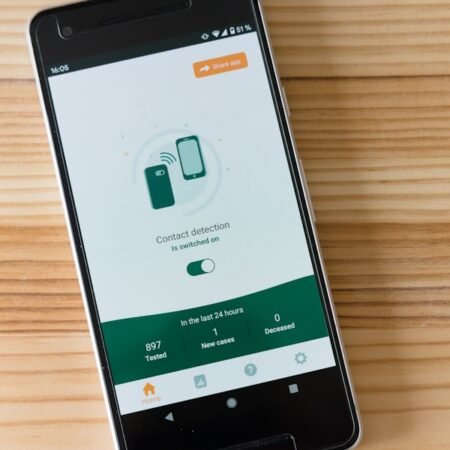Handmade baby mobiles are a delightful addition to any nursery, adding a personalized touch and a unique focal point for your little one. Creating your own baby mobile allows you to tailor it to match your nursery decor and incorporate elements that are meaningful to you and your family. Whether you opt for a nature-inspired theme with delicate felt animals and leaves, or a celestial design with stars and moons, the possibilities are endless.
One popular approach is to use embroidery hoops as the base for the mobile, allowing for easy customization and a lightweight structure that gently sways with the slightest breeze. By incorporating colors, textures, and shapes that captivate your baby’s attention, a handmade baby mobile can also serve as a stimulating and visually engaging feature in their early development. For a nature-themed mobile, consider using soft, pastel-colored felt to craft adorable woodland creatures such as owls, foxes, and rabbits.
Attach these charming figures to the embroidery hoop using clear fishing line for a whimsical floating effect. To add an extra touch of personalization, consider incorporating elements that hold sentimental value, such as incorporating fabric from a beloved childhood blanket or using beads from a cherished piece of jewelry. By infusing your creativity and love into the design, you can create a baby mobile that not only complements your nursery decor but also holds special significance for your family.
Key Takeaways
- Handmade baby mobiles add a personalized touch to the nursery and can be customized to match any theme or color scheme.
- DIY baby wrap carriers are not only comfortable and stylish, but also allow for a custom fit for both parent and baby.
- Homemade teething toys provide a safe and fun option for soothing a baby’s gums, and can be made with non-toxic materials.
- Customized onesies offer a creative way to personalize a baby’s wardrobe with unique designs and messages.
- Upcycled baby furniture allows for the transformation of old items into functional and stylish nursery pieces, saving money and reducing waste.
DIY Baby Wrap Carriers: A Step-by-Step Guide to Making Your Own Comfortable and Stylish Baby Carrier
DIY baby wrap carriers offer a comfortable and stylish way to keep your little one close while allowing you to move freely and attend to daily tasks.
Making your own baby wrap carrier provides the opportunity to customize the fabric, length, and design to suit your preferences and ensure a perfect fit for both you and your baby.
One of the most popular styles is the stretchy wrap, which consists of a long piece of fabric that is wrapped around the caregiver’s body to create a secure and cozy pouch for the baby.
Using soft, breathable fabrics such as jersey knit or bamboo blend ensures comfort for both the wearer and the baby, making it an ideal choice for extended wear. To create a DIY stretchy wrap carrier, start by selecting a fabric that provides ample stretch and support. Jersey knit fabric is an excellent choice due to its elasticity and softness against the baby’s skin.
Cut the fabric to the desired length, typically around 5-6 yards, and ensure that the edges are neatly hemmed to prevent fraying. When wearing the wrap, position the fabric over your shoulders and cross it at the back before bringing the ends around to tie securely at the front. This method allows for various carrying positions, including front inward-facing, front outward-facing, hip carry, and back carry, providing versatility as your baby grows and develops.
Homemade Teething Toys: Fun and Safe DIY Options for Soothing Your Baby’s Gums
Homemade teething toys offer a safe and enjoyable way to provide relief for your baby during the teething process while allowing you to exercise creativity in crafting unique and personalized items. When making your own teething toys, it’s essential to prioritize safety by selecting materials that are non-toxic, durable, and free from small parts that could pose a choking hazard. Silicone beads are a popular choice for DIY teething toys due to their soft texture, easy cleaning, and resistance to mold and bacteria growth. By combining silicone beads with natural wooden rings or shapes, you can create visually appealing and soothing teething toys that cater to your baby’s sensory needs.
To craft a simple yet effective homemade teething toy, start by selecting food-grade silicone beads in various shapes and colors. These beads can be threaded onto a sturdy cord or ribbon, ensuring that they are securely fastened to prevent any risk of detachment. Wooden rings or shapes can be incorporated into the design to provide additional texture and relief for sore gums.
When creating teething toys, consider experimenting with different bead sizes and textures to offer varied sensory stimulation for your baby. Additionally, incorporating elements such as crinkle fabric or knotted fabric tails can add tactile interest and further engage your baby’s senses during play. For more inspiration and ideas for DIY baby projects, you can visit this Pinterest board.
Customized Onesies: Creative Ways to Personalize Your Baby’s Wardrobe with DIY Designs
| DIY Onesie Design | Materials Needed | Instructions |
|---|---|---|
| Iron-on Transfer | Onesie, iron-on transfer paper, printer, iron | Design and print image on transfer paper, place on onesie, iron to transfer |
| Fabric Paint | Onesie, fabric paint, paintbrush or sponge | Place cardboard inside onesie, paint design onto onesie, let dry |
| Embroidery | Onesie, embroidery hoop, embroidery floss, needle | Stretch onesie over hoop, embroider design onto fabric |
Customized onesies offer an opportunity to infuse your baby’s wardrobe with personalized touches and creative designs that reflect your unique style and sentiments. Whether you opt for hand-painted motifs, appliqués, or fabric transfers, customizing onesies allows you to showcase your creativity while adding a distinctive flair to your baby’s attire. When selecting materials for DIY onesie designs, prioritize comfort and safety by choosing non-toxic fabric paints, soft appliqué fabrics, or high-quality iron-on transfers that withstand repeated laundering without fading or peeling.
To personalize onesies with hand-painted designs, begin by selecting fabric paints in vibrant colors that are safe for use on baby clothing. Lay the onesie on a flat surface and place a protective barrier inside to prevent any paint from seeping through to the back layer.
Using fine-tipped brushes or fabric markers, create whimsical illustrations, patterns, or lettering directly onto the onesie fabric.
Consider incorporating elements that hold sentimental value, such as painting your baby’s name in a charming script or depicting their favorite animals or objects. For those who prefer a no-sew approach, iron-on transfers offer an effortless way to apply intricate designs or images onto onesies, providing a professional-looking finish with minimal effort.
Upcycled Baby Furniture: Transforming Old Items into Functional and Stylish Nursery Pieces

Upcycling old furniture into functional and stylish nursery pieces not only reduces waste but also allows you to create unique and personalized items that add character to your baby’s living space. Whether repurposing an old dresser into a changing table or transforming wooden crates into storage units, upcycled baby furniture projects offer endless possibilities for creativity and resourcefulness. By giving new life to pre-loved items, you can customize nursery furniture to match your decor scheme while minimizing environmental impact through sustainable practices.
One popular upcycling project involves repurposing vintage suitcases into charming storage solutions for baby essentials. By adding sturdy legs or casters to the base of the suitcase, it can be transformed into a stylish and functional storage unit that adds a touch of nostalgia to the nursery decor. Additionally, repainting or refinishing old cribs or rocking chairs allows you to breathe new life into these timeless pieces while infusing them with modern flair.
Upcycled baby furniture projects not only contribute to sustainable living but also provide an opportunity to showcase your creativity by incorporating unique finishes, hardware, or decorative elements that reflect your personal style.
Handcrafted Baby Blankets: Easy DIY Projects for Creating Soft and Cozy Blankets for Your Little One
Handcrafted baby blankets offer a heartfelt way to provide warmth and comfort for your little one while allowing you to showcase your crafting skills through personalized designs and luxurious materials. Whether opting for traditional quilting techniques, crochet patterns, or simple no-sew fleece blankets, creating handmade baby blankets allows you to tailor the size, texture, and visual appeal to suit your preferences. By selecting soft and hypoallergenic fabrics such as organic cotton, bamboo blend, or minky fleece, you can ensure that the blanket is gentle against your baby’s delicate skin while offering cozy insulation.
For those with sewing skills, quilting offers an opportunity to create intricate designs using fabric squares or strips arranged in captivating patterns. Quilted baby blankets can feature charming motifs such as animals, flowers, or geometric shapes that add visual interest while providing tactile stimulation for your baby. Crocheted baby blankets allow for endless creativity through various stitch patterns and color combinations, resulting in heirloom-quality pieces that can be cherished for generations.
No-sew fleece blankets provide a quick and accessible option for crafting cozy coverings by simply knotting the edges of two complementary fleece fabrics together.
DIY Baby Headbands: Simple and Adorable Accessories to Make for Your Baby’s Wardrobe
DIY baby headbands offer a delightful way to accessorize your little one’s wardrobe with charming and personalized accents that showcase your creativity. Whether crafting fabric bows, floral crowns, or knotted headbands, creating handmade accessories allows you to tailor each piece to match different outfits while providing a comfortable and stylish embellishment for your baby’s attire. When making baby headbands, prioritize using soft and stretchy materials such as cotton jersey or elastic bands that ensure a snug yet gentle fit without causing discomfort.
To craft simple fabric bows for baby headbands, begin by selecting coordinating fabrics in various prints or colors that complement your baby’s wardrobe. Cut the fabric into strips of suitable lengths and widths before folding them into bow shapes and securing them at the center with stitches or fabric glue. Attach the finished bows onto soft elastic bands or headband bases using sewing techniques that ensure durability and flexibility.
For those who prefer floral-inspired headbands, consider using artificial flowers or fabric blooms secured onto stretchy headbands for an effortlessly charming accessory. In conclusion, engaging in creative DIY projects for baby gear not only allows new parents to personalize their nursery space but also provides an opportunity to showcase their crafting skills while ensuring safety and comfort for their little ones. From handmade mobiles that captivate babies’ attention to personalized onesies that reflect unique styles, each DIY project offers a chance for parents to infuse love and creativity into their baby’s world while fostering a sense of connection through handmade items.
FAQs
What are some creative DIY baby gear projects every new parent should try?
Some creative DIY baby gear projects every new parent should try include handmade baby mobiles, DIY baby wrap carriers, homemade teething toys, customized onesies, upcycled baby furniture, handcrafted baby blankets, and DIY baby headbands.
How can I create a personalized and unique baby mobile for my nursery?
To create a personalized and unique baby mobile for your nursery, you can use materials such as felt, embroidery hoops, and colorful threads to make custom shapes and designs that reflect your baby’s interests or your nursery’s theme.
What is the process for making a DIY baby wrap carrier?
The process for making a DIY baby wrap carrier involves selecting a soft, breathable fabric, measuring and cutting it to the appropriate size, and then following a specific wrapping technique to ensure your baby’s safety and comfort.
What are some fun and safe DIY options for soothing my baby’s gums with homemade teething toys?
Some fun and safe DIY options for soothing your baby’s gums with homemade teething toys include using natural materials like untreated wood, organic cotton fabric, and food-grade silicone to create teethers in various shapes and textures.
What are some creative ways to personalize my baby’s wardrobe with DIY designs on onesies?
Some creative ways to personalize your baby’s wardrobe with DIY designs on onesies include using fabric paint, iron-on transfers, or appliqué techniques to add custom images, patterns, or text to plain onesies.
How can I transform old items into functional and stylish nursery pieces through upcycling?
You can transform old items into functional and stylish nursery pieces through upcycling by repurposing materials such as wooden crates, vintage suitcases, or old furniture to create unique storage solutions, seating, or decorative accents for the nursery.
What are some easy DIY projects for creating soft and cozy baby blankets?
Some easy DIY projects for creating soft and cozy baby blankets involve using materials like fleece, flannel, or knit fabric to sew or knot together a simple blanket, and adding personal touches such as embroidery or appliqué for a customized look.
How can I make simple and adorable baby headbands for my baby’s wardrobe?
You can make simple and adorable baby headbands for your baby’s wardrobe by using elastic bands, fabric scraps, and decorative embellishments like bows or flowers to create comfortable and stylish accessories that complement your baby’s outfits.


































